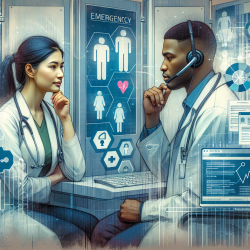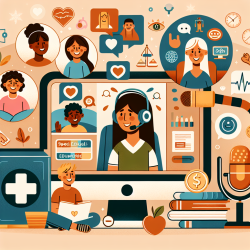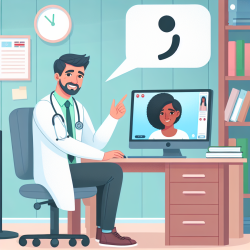Introduction
In the realm of emergency medicine, the concepts of privacy and confidentiality are not just ethical imperatives but are legally mandated practices that significantly impact patient care. The research article titled From Hippocrates to HIPAA: Privacy and Confidentiality in Emergency Medicine—Part I: Conceptual, Moral, and Legal Foundations provides a comprehensive overview of these concepts, their moral and legal underpinnings, and their application in emergency settings. For practitioners, understanding and implementing these principles can enhance patient trust and improve therapeutic outcomes, especially in environments like online therapy services provided by companies such as TinyEYE.
Understanding Privacy and Confidentiality
Privacy, often defined as "the right to be let alone," encompasses physical, informational, and decisional aspects. In healthcare, it translates to the protection of personal information and the physical space of patients. Confidentiality, closely linked to informational privacy, involves safeguarding sensitive patient data from unauthorized disclosure. Both concepts are integral to maintaining patient autonomy and dignity.
Moral and Legal Foundations
The commitment to privacy and confidentiality is rooted in the moral principles of human dignity, autonomy, and beneficence. Legally, these obligations are reinforced by state and federal statutes, including the Health Insurance Portability and Accountability Act (HIPAA), which sets stringent standards for protecting patient information. For practitioners, understanding these legal frameworks is crucial in navigating the complexities of patient care in emergency settings.
Challenges in Emergency Settings
Emergency departments (EDs) pose unique challenges to maintaining privacy and confidentiality due to their open and often crowded environments. Practitioners must be adept at managing these challenges to protect patient information effectively. This involves understanding the scope and limits of privacy and confidentiality, as well as the moral and legal duties that may conflict with these obligations.
Implementing Research Outcomes
Practitioners can enhance their skills by integrating the research outcomes into their practice. This involves:
- Adopting a clear understanding of privacy and confidentiality concepts and their application in emergency settings.
- Engaging in continuous education on the legal aspects of patient information protection, including HIPAA regulations.
- Developing protocols to manage potential breaches of confidentiality, particularly in high-pressure environments like EDs.
- Utilizing data-driven approaches to assess and improve privacy practices, ensuring compliance with legal standards.
Encouraging Further Research
For practitioners interested in advancing their knowledge, further research into specific privacy and confidentiality issues in emergency medicine is encouraged. This can include exploring the impact of technological advancements on patient data protection and the evolving legal landscape surrounding patient privacy.
To read the original research paper, please follow this link: From Hippocrates to HIPAA: Privacy and confidentiality in Emergency Medicine—Part I: Conceptual, moral, and legal foundations.










